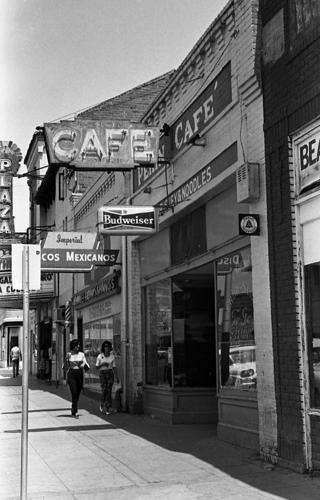Take a wide sweeping look in and around Tucson. It’s filled with reminders of the Viejo Pueblo’s Mexican history and culture, past and present.
There are street names in Spanish.
There are festivals where Mexican music is heard. And of course there are countless restaurants serving up various plates of Mexican food.
But look closer and beyond street names, restaurants and music to find a place in the city and the region that reflects Tucson’s wide-ranging Mexican-American presence.
Where is the effort to preserve and celebrate Tucson’s and Southern Arizona’s Mexican-American culture and history in a deeper and meaningful way? Other than a few structures or public places, there are no major public spaces or significant centers to honor our region’s deep-rooted Mexican-American history.
El Tiradito, the semi-religious shrine on South Main Avenue, you say? Nope.
Then how about the Sosa-Carrillo-Frémont Museum, an outpost of the Arizona Historical Society, and the Samaniego house, a shuttered restaurant, both at the Tucson Convention Center? Hardly.
There’s the kiosk in La Placita, overshadowed by the nearly abandoned downtown commercial center at Broadway and Church. We’re lucky it is still standing.
The Pancho Villa statue at the Veinte de Agosto Park downtown? Gimme a break.
Tucson is about 30 percent Latino (overwhelmingly Mexican-American), is one of the oldest communities in the country and is a source of Mexican-American culture that has spread beyond our ring of mountains, yet Mexican-American culture and history seem to be afterthoughts in the citywide conversation about Tucson.
“I really believe it’s a struggle to get people to recognize the significance of our culture,” said Betty Villegas, a native Tucsonan. “It’s not just about bricks and mortar.”
It’s about expanding the conversation and seeking inclusion in other preservation efforts, she said.
Villegas and several other activists and academics will hold a talk Thursday at the University of Arizona to focus on Mexican-American participation in “local heritage conservation and public landscape projects.”
The nascent group is calling itself Mexican American Heritage and Preservation in Southern Arizona.
It will hold a panel discussion at 6:30 p.m. in the Catalina Room at the University of Arizona’s Student Union.
The panelists include Villegas, a member of Latinos in Heritage Conservation, author Patricia Preciado Martin, librarian Amanda Castillo and Lydia R. Otero, UA professor in the Mexican-American studies department, which is sponsoring Thursday’s event. Pima County Supervisor Richard Elías will moderate the panel.
Otero said Southern Arizona’s Mexican-American community has something to say, but that voice isn’t heard without a collective organization.
As a result, “We’re letting others speak for us,” said Otero, a Tucson native and author of “La Calle” on UA Press, a critical look at how Tucson government and civic leaders 50 years ago endorsed plans to demolish 80 acres of Tucson’s Mexican-American downtown barrio.
Still today, the eradication of the heart of Tucson’s historic Mexican-American neighborhood resonates negatively with longtime residents.
And still many Tucsonans do not understand the lingering hurt and anger, and some even applaud the erasing of a significant aspect of Tucson’s past in the name of progress and tourist promotion.
The narrative then — and decades back when the Sunshine Club promoted Tucson — has been how to dress up Tucson to attract tourists. Lost in that narrative: How should Tucson be developed and promoted for its residents?
Villegas said there are a lot of places in Tucson and the surrounding area that are not recognized as significant to Mexican-American history, yet “others are telling our story.”
She added that Tucson’s Mexican-American community needs to be more involved and take charge in relating and promoting its history.
After Thursday, the participants hope to launch a new narrative, Villegas added.
“I’m passionate about Tucson, about my roots, and proud of who I am and who we are as a people.”






